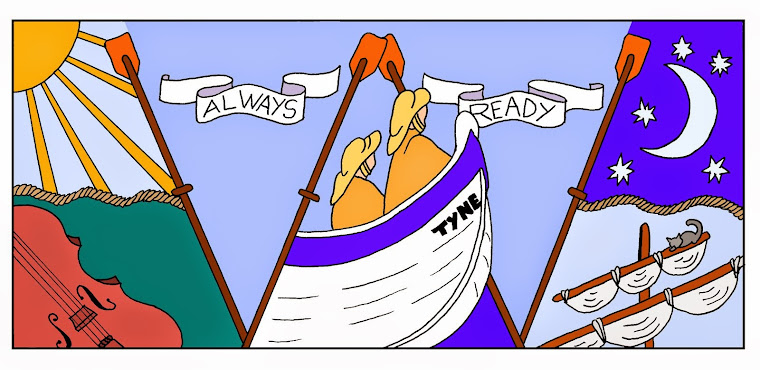WILLIAM WOULDHAVE (1751 -
1821)
1751
William Wouldhave was baptised in North Shields on 9
April at Christchurch in the parish of Tynemouth. His father is named as Thomas Wouldhave (died
1778), a painter and/or Roper. Thomas
Wouldhave married Elizabeth Heart (d 1803) in South Shields St Hilda’s, Jan 10
1747. Their other children were Luke
John (1753), Mary (1756), Charlotte (b and d 1763), Charlotte (1769).
(Tynemouth Christ Church Parish Registers
Transcriptions)
1775
William married Hannah Crow on Mar 1 1775 at St
Hilda’s, South Shields. They had a son
Luke christened in March 1776 and daughter Hannah christened in December 1784,
South Shields St Hilda’s.
(South Shields St Hilda’s Parish Registers
Transcriptions)
1789
William worked in South Shields. He was for many years the Clerk of St Hilda’s
Church, South Shields. In 1789 a competition was launched to
reward any inventor who could provide a craft for the purpose of saving lives
from a shipwreck. This followed the tragic fate of the doomed ship, the Adventure
from Newcastle that had gone aground near the coast at the Tyne River inlet.
Less than 300 yds from the shore and clearly visible, little could be done to
save the passengers and crew who were seen to be dropping from the rigging into
the sea.
With
cork inside, his lifeboat was designed to be self-righting if overturned in
stormy seas. A model is kept in the
local museum. (100 objects North East)
The
first lifeboat, called the 'Original', of 1789, was built in South Shields by
the boatbuilder Henry Greathead (who won the competition).
In the accounts of Chapelry of South Shields
William Wouldhave was paid £1 1s for his ingenious model
1803
William was selected as sexton of St Hilda’s, South
Shields, in April 1803, but resigned before entering the appointment.
1821
In January, William Wrote letters to the Board of
Longitude regarding a “method of ascertaining difference of longitude by
observation that will put it on an equal footing with latitude”.
1821
Willliam died on 5th October 1821 and
was buried at South Shields on October 20th, aged 70. He was living at Mill Dam Bank. Hannah his wife was buried on 31st
March 1824
(South Shields Burials and Newcastle Courant)
1858
July 23rd, from the Newcastle Courant. “Miss Hannah Wouldhave died last night in
West Holborn South Shields age73. We
yesterday announced the generous donation of the Duke of Northumberland to aid
in comforting her age; it will decently lay her "where the weary are at rest". The genius of her father can never be forgotten
in South Shields, and ought to be gratefully remembered wherever British Seamen
may be found. A participator in the
invention of the lifeboat, he possesses the undivided honour (alas that was
all) of propounding the plan for the constructing of graving docks, employed
now universally for the navy as well as merchant ships, which added immense
advantages to the nation - Shields Gazette of yesterday. Hannah was paid a pension from the Life Boat
Fund from 1850.”
1888
Newcastle Courant Jan 27th. There was a proposal for a centenary
exhibition to celebrate the invention of the lifeboat. “Wouldhave was a native of North Shields, in
the register of baptisms in Christ Church, Tynemouth 1751 April 9th,
William son of Thomas Wouldhave. However
this may be it is clear that for the greater portion of his life Wouldhave was
to all intents and purposes a South Shields man. In South Shields he spent his best day; there
he worked and there he made his well-known invention.”
The memorial, at Marine Park in South Shields,
consists of a clock tower, and the second oldest lifeboat, the Tyne, with busts
of both Wouldhave and Greathead in stone.
The Tyne Lifeboat is featured on the postcard image above.

